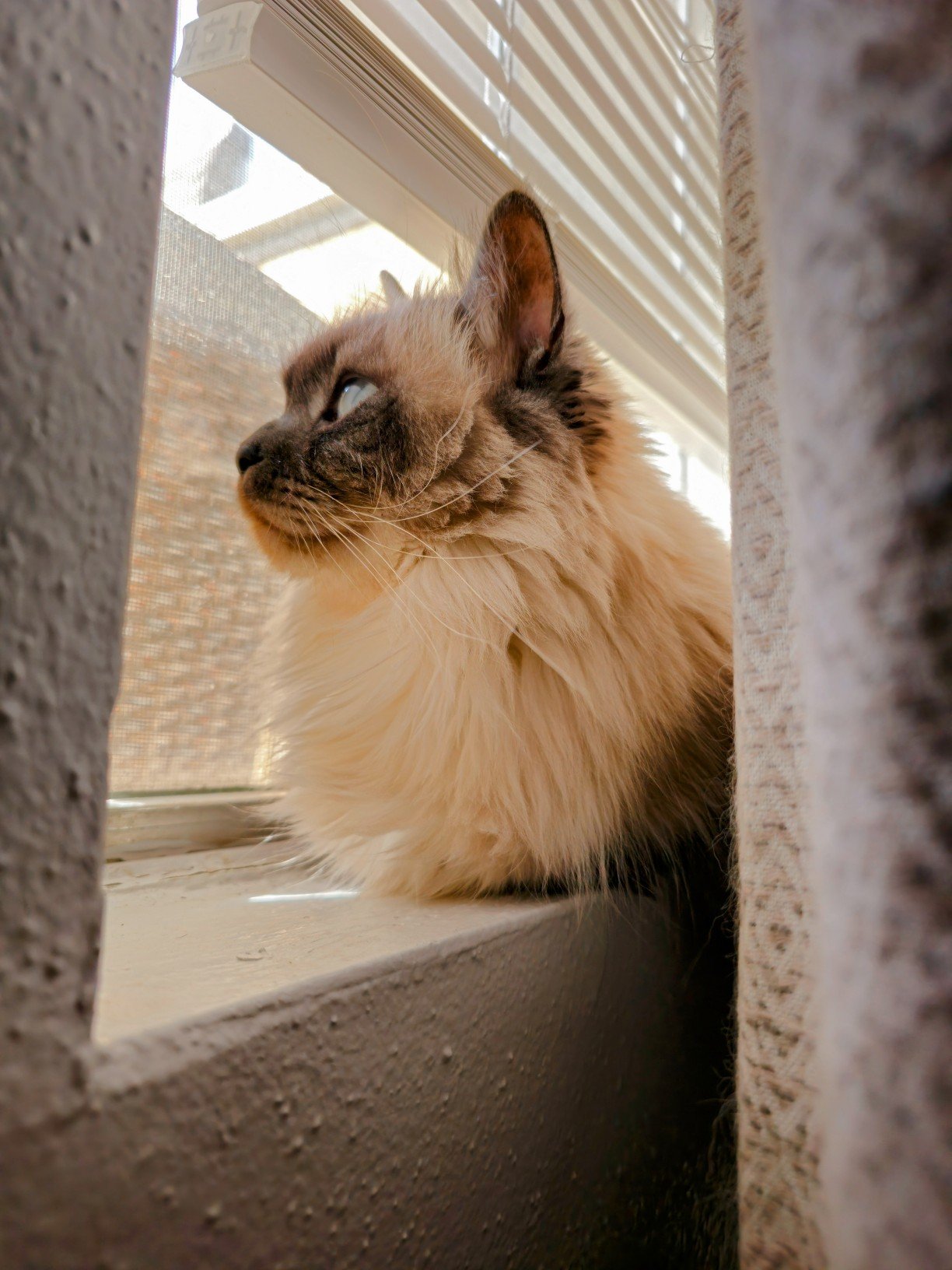Hi, I just want to share / get some opinion.
I started using Linux 2 years back. I was dual booting back then and after a year switched to Linux completely.
I started out using Ubuntu, hated it, installed Manjaro after a week and when pacmac broke the thing within 2 months, I watched a bunch of YouTube videos, read the arch wiki and installed arch. Things were going great except for some Nvidia issues (I am using an Optimus laptop) but utt was running smoothly. Then decided that I want to build a game engine and the nvidia issues were significant. So I read somewhere that Fedora has great nvidia support and I installed it and everything worked. I installed Fedora 39, and it worked. When Fedora 40 came, I upgraded no issues, Fedora 41 came, no issues.
But just a few days back when I had vacation, I decided my system was getting bloated and I didn’t manually want to uninstall apps, I decided let’s format it. But I thought… Arch might take up less space on my disk(1 have a 512gb nvme, and t 2tb hdd, but I like to put things like games and projects I am working on, on the nvme). So I installed arch and loving the experience. I installed Nvidia-open drm drivers and it just works.
TLDR: Is it normal to distro hop after being using a distro perfectly for so long?
PS: I used archinstall because I didn’t want through the lengthy process again. And archinstall works great.
I started using Linux 2 years back.
Here’s the cause and it’s normal.
I remember going through a lot of hopping the first 3 or 4 years but have been settled on Arch since then.
deleted by creator
Every distro hopper eventually settles on either Arch or Debian.
deleted by creator
Bold of you to not run to assume I don’t run Arch on my server too (but with all the services inside containers (which are arch images))
I’ve settled on a minimal Debian installation with Flatpaks for all software.
A lot less config work than Arch, fewer bugs than Fedora Silverblue, and in my experience it just works.I’m so fucking over dealing with dependencies.
Well, I settled on a Ubuntu derivative so I guess it’s in the family. It could just as easily have been Fedora though.
Who cares if it’s normal or not. You do you
no see a doctor
If distro hopping happens more than once a week, please stop hopping immediately and dial 911 as this is the sign of a very rare and serious symptom
plays more upbeat music
Distrohopping is just a symptom of FOMO (Fear of missing OpenSUSE)
I had tried opensuse tumbleweed and absolutely loved the way it did things, my perfect balance between fedora and arch, but there were Teo problems that I couldn’t get over.
- Zypper is slow.
- I couldn’t get it to do parallel downloads packages.
But it’s a great distro nonetheless.
Also it has a similar problem with fedora that arch doesn’t. VIDEO CODECS. I don’t understand how the USA messes with my ability to play a video and I am seriously annoyed by it.
I mean I love OpenSUSE TW. Been using it for well over 2 years. One of the best distros I used. But I am slowly looking to try something new. Its all fun and games 😄
The distro that cured my distro-hopping was Slackware.
It taught me that you can do anything Linux can do in any distro, no matter how obscure, ancient or simplistic.It also taught me that there is no reward waiting for you on the other side for making your own life difficult.
Went back to Debian knowing I could do it all myself manually, but I don’t have to.
For me it is just trying different flavors. They are all unique in their own right. I have not used Slackware yet. Might give it a go though.
Are you even a real Linux user when you don’t switch distros every day?
Personally I’m usually content for a long time. Although my ideal distro still doesn’t exist and probably never will with the way the meta is currently going.
But you do you. You know how hard/easy it is to reinstall so as long as you’re having fun just experiment away.
What would your ideal distro look like, and what’s missing currently?
At the moment I use OpenSUSE Tumbleweed but it’s a little too conservative in my opinion. I can manage it but I miss Debian automatically enabling and restarting services on install/update and management of user groups and other little helpers.
I’d love to have a Debian based rolling release distro with the same quality control as Tumbleweed. Not Sid, that’s too much tied to Debian Testing’s release cycle and doesn’t get security updates in a timely manner.
That used to be my holy grail, too. At some point I realized I do pretty much the same tasks on my PC now that I did 5 years ago.
So if 5 years of software upgrades don’t change the utility of my PC fundamentally, then I can live with Debian Stable.I like flapjack* for the occasional programs I want the newest version.
*Sure, autocorrect, let’s call it that now.
TLDR: Is it normal to distro hop after being using a distro perfectly for so long?
I have used the same distribution (Debian) for over 20 years when I decided to change distributions and switch to NixOS. Debian was - and still is - a very fine distribution. I just needed something radically different.
So, to answer your question: yes, it is perfectly normal. Two years isn’t even long.
I’ve been using Linux for 25 years. I started with SuSe, switched to RedHat after a couple months, and after a few more months switched to Gentoo… for 10 years, then did Arch for the remainder.
Frankly, I think that distro hopping is a bad idea because it means you don’t get enough time really understanding how to fix things. As a long time Arch user, it would never occur to me to throw out 10+years of tooling and scripts, muscle memory and shorthand to fix a driver issue. I would read the wiki top to bottom and then go spelunking through other sources until I find the solution (then update the wiki) before I’d switch to something foreign with its own set of problems and unknowns.
My advice is to find a distro that makes sense to you, and that has a deployment pattern you like and commit to it for a few years. Don’t switch unless you find something that fulfills those two requirements even better, and even then do so cautiously. Your experience and understanding is hard-won.
Gentoo also cured me of distro-hopping
My advice is to find a distro that makes sense to you, and that has a deployment pattern you like and commit to it for a few years.
Excellent advice. I’d also include maintenance structure, if that’s something you can determine. Do they have a history of addressing important bugs? How active are they? Is it maintained by a single dev? Does the team seem overwhelmed or are they stretched thin?
I’ve avoided distros that have a single maintainer (like Archcraft), because while voluntary distro hoping can be fun, forced distro hoping due to the lone maintainer getting burned out and abandoning the project, leaving their custom repos dead, is no fun for anyone.
I was on EndeavourOS for a couple of years and now I’m just on vanilla Arch with KDE and I also couldn’t imagine just dumping all of my knowledge and problem solving workflow by jumping to a different distro or architecture. I certainly can’t see myself ever using Windows again. It’s very weird to imagine that if I ever wanted a flagship computer I would probably buy an Apple.
Pretty normal if you’ve never used debian.
Debian is the cure to distro hopping
This is so true started on Original SUSE 6 switched to Debian been on debian for 25 years
Not normal, you are a weirdo.
I use W11 bloat edition, BTW
I recommend distrohopping to check out Vista and iOS. It’s easier to get started with if you dual boot them on your W11 netbook.
Every Linux user has to go through a period of compulsive distro hopping. Don’t worry, eventually you’ll grow tired of it and just settle on one workhorse distro.
Yes, normal. It is good for you and it is good for Linux.
Distros try different things, and it is good to be exposed to many of those. It helps to discover the most functional ideas and cross pollinate.
Wait until you try non-linux FOSS OSes…
Easier to distro hope if your data is safe elsewhere.
I had a three year bender with OpenBSD back in 2001-2003 or so. I even started building my own kernels and doing a tiny bit of hacking on the code. There’s all kinds of interesting tools and systems out there if you start exploring.
Nice!
I am currently setting up a FreeBSD ZFS file server. Software installs are so fast I thought they failed. (OS installer needs quality of life improvemens.)
We had a similar issue back in 2004 or so. Downloading a browser (Mozilla) was a bout 40MB. Normally it took about 30 seconds to pull it down on our University Internet. Then one day we were setting up systems and every time we clicked the download button nothing seemed to happen.
Further inspection showed that it had many successful download in under 1 second each. Our IT network team got us linked up to Internet2. It was able to download so fast that the bottleneck was the IDE bus of about 40MB/s. The file was coming from Intel over I2 so we couldn’t even see it download before it was done.
It’s normal if you feel like it, don’t care about others opinions too much ;)
My opinion : far too many distros are « pet distros », a few are actually usable for servers, for desktop as a daily driver and do actual stuff instead of figuring out how to make things work/look pretty.
The one thing I wish I would have learned in the beginning is that distro = opinionated changes to the base offering. Some are sensible, while some maintainers might add fluff that they like themselves.
Seems like the ones that do minimal changes but still offer something novel are the ones that tend to last, though there’s obviously exceptions.
My opinion : far too many distros are « pet distros »
I think those are actually great. Personally wouldn’t use them for a prolonged time or anything critical. But I love the spirit, even if the distribution is of no use to me.
back when i started with Linux, i would distro hop in the beginning since i was trying out different ones, making mistakes, but taking that knowledge with me onto the next one. Then i discovered Manjaro, then EndeavourOS and have been on it for years now
Have thought about reinstalling EOS once i rebuild my computer, but see how that goes -
I distro-hopped so many times I got so sick of change that I’ve stuck with Debian for 4 years, the longest ever. It’s a peaceful life.
I think this is part of tge beauty of linux, you hop till you’re happy 😀










